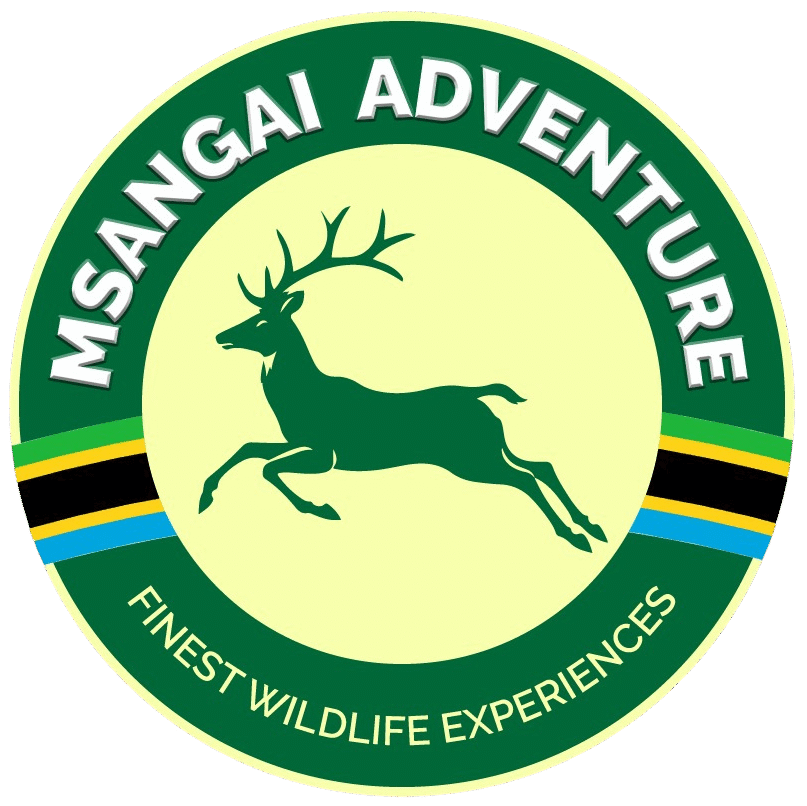- 20
- 3
- 9
- 13
- 14
- 11
- 3
- 14
Katavi National Park
Location: Western Tanzania, near Lake Tanganyika, part of the Western Safari Circuit
Best Time to Visit: June to October (dry season) for game viewing; November to May (wet season) for birdwatching
Famous For: Vast floodplains, large herds, dramatic predator-prey interactions, intense dry-season wildlife viewing
Ecosystem: Miombo woodland, floodplains, seasonal lakes, palm-fringed watercourses, acacia woodlands
Key Wildlife: Buffalo, elephants, hippos, lions, leopards, hyenas, cheetahs, zebras, giraffes, over 400 bird species
Overview
Katavi National Park is one of Tanzania’s most isolated and least-visited national parks, yet it offers one of the most authentic, wild safari experiences in all of Africa. Located in the remote southwest of the country, Katavi spans approximately 4,471 square kilometers, encompassing vast floodplains, woodlands, and seasonal lakes that come alive with wildlife during the dry season.
This park is ideal for experienced safari-goers, photographers, and lovers of solitude who seek the raw beauty of Africa — where herds are enormous, predators are abundant, and humans are rare.
Location and Accessibility
Katavi lies in the western part of Tanzania, near Lake Tanganyika, and is part of the country’s Western Safari Circuit. It’s extremely remote, which has helped preserve its pristine nature.
By air: The most practical way to reach Katavi is via charter flights from Dar es Salaam, Arusha, or Ruaha National Park. Flights typically land at Ikuu Airstrip, inside the park.
By road: A very challenging option, requiring several days over rough terrain, usually from Mbeya or Kigoma — recommended only for adventurous overland travelers.
The park’s isolation means fewer tourists and a more exclusive experience.
Landscapes and Ecosystems
Katavi’s terrain is dominated by:
- The Katuma River, which flows through the heart of the park and feeds the seasonal floodplains of Lake Katavi and Lake Chada.
- Miombo woodland, the main vegetation type in surrounding areas.
- Open grasslands and floodplains, which host massive herds during the dry season.
- Palm-fringed watercourses, dense thickets, and acacia woodlands.
During the dry season, the rivers shrink and the floodplains dry up, concentrating animals around the last water sources and creating a dramatic stage for predator-prey interactions.
Wildlife
Katavi is renowned for its intense dry-season wildlife viewing, with some of the highest concentrations of animals in East Africa when water becomes scarce.
Large Mammals:
Buffalo – Katavi hosts herds of up to 1,000 animals, among the largest in Africa.
Elephants – Frequently seen at rivers and waterholes.
Hippos – During the dry season, hundreds pack into the last remaining pools, resulting in dramatic jostling and sometimes deadly fights for space.
Crocodiles – Often seen basking or hiding in mud caves along the riverbanks.
Predators:
Lions – Common and often hunt large prey like buffalo.
Leopards – Found in woodland areas, though more elusive.
Hyenas – Abundant and vocal, often scavenging or hunting in packs.
Cheetahs – Sometimes seen on open plains, especially in the Chada area.
Other Species:
Zebras, giraffes, topis, hartebeests, impalas, reedbucks, and waterbucks.
Roan and sable antelopes – More rarely seen but present in miombo areas.
Birdlife
Over 400 bird species have been recorded in Katavi, making it an excellent location for birding, particularly in the wet season when migratory species arrive.
Notable birds include:
African fish eagle, lilac-breasted roller, saddle-billed stork, open-billed and marabou storks, bateleur eagles, bee-eaters, weavers, and kingfishers.
Safari Activities
Katavi offers a range of classic and specialized safari experiences:
1. Game Drives
The primary activity, usually in the mornings and evenings.
Drives cover the Katuma River, Lake Katavi, and Lake Chada areas, where wildlife is densest.
2. Walking Safaris
Available with armed guides and park rangers.
Walking among large animals in Katavi offers an intense, exhilarating wilderness experience.
3. Birdwatching
Especially productive from November to April, when migratory birds join the resident populations.
4. Fly-Camping
Offered by some high-end camps, this involves spending a night in the bush under the stars — a true wilderness adventure.
Best Time to Visit
Dry Season (June to October): Best time for game viewing as animals concentrate around limited water sources. Comfortable travel conditions.
Wet Season (November to May): Park becomes lush and green, excellent for birdwatching, but roads may be impassable and some camps close.
Lodging and Accommodation
Due to remoteness, accommodation is limited but high quality:
Chada Katavi Camp – Luxury tented camp in a prime wildlife area.
Mbali Mbali Katavi Lodge – Riverside location with excellent views and game access.
Foxes Safari Camp – Well-established camp with game-rich surroundings.
Packages usually include full board, flights, transfers, and guided safaris.
Conservation and Challenges
Katavi’s remoteness has preserved its wild character but limits funding and tourism visibility.
Challenges:
Poaching, encroachment and cattle grazing, logistical difficulties in park management.
Efforts by TANAPA, private lodges, and conservation groups aim to protect the ecosystems.
Why Visit Katavi?
Ideal for safari veterans, photographers seeking dramatic wildlife, adventurous travelers seeking solitude, and conservation-minded visitors.
In Katavi, you’ll often see more lions than tourists, experiencing a level of wildness rarely found elsewhere.
Quick Facts
- Location: Western Tanzania, near Lake Tanganyika
- Size: 4,471 km²
- Accessibility: Charter flights to Ikuu Airstrip; rough roads from Mbeya or Kigoma
- Best Time to Visit: June–October (dry), November–May (wet for birds)
- Famous For: Large herds, predator-prey drama, isolation
- Key Wildlife: Buffalo, elephants, hippos, lions, leopards, hyenas, cheetahs
- Activities: Game drives, walking safaris, birdwatching, fly-camping
